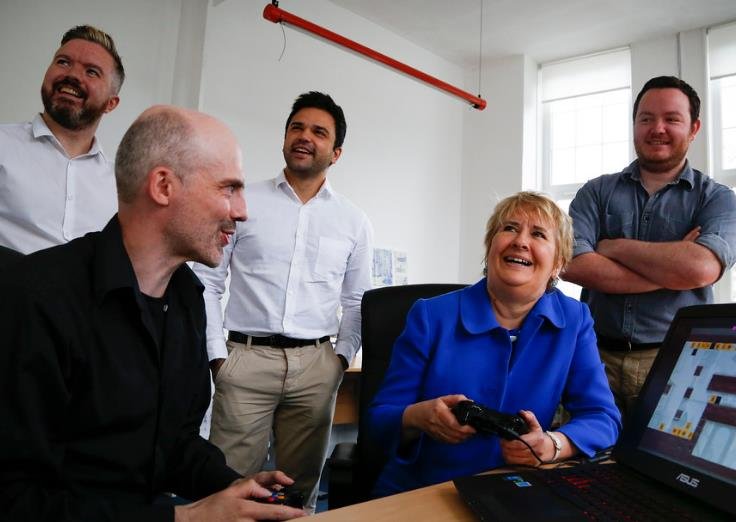October brought a mixed bag for businesses in Scotland, as confidence levels saw a noticeable decline while hiring intentions remained buoyant. The latest Business Barometer from the Bank of Scotland reveals a dip in overall business sentiment, raising questions about the underlying factors influencing this trend. Despite the downturn, many firms are still eager to expand their workforce, signaling a complex economic landscape.
Declining Confidence Reflects Economic Uncertainty
Business confidence in Scotland fell by four points in October, settling at 44%, according to the Bank of Scotland’s Business Barometer. This drop highlights growing concerns among Scottish companies about their future prospects and the broader economic environment.
Detailed Confidence Metrics:
| Metric | October 2024 | September 2024 |
|---|---|---|
| Overall Confidence | 44% | 48% |
| Confidence in Business Prospects | 45% | 47% |
| Optimism in the Economy | 43% | 49% |
Dave Atkinson, regional director for the West Midlands at Lloyds, noted, “Although confidence fell during October, West Midlands firms are still setting out clear plans to drive further growth. Whether they’re targeting investments in technology, or looking to break into new markets – in the UK or overseas – we’ll continue to be by their side with our support and insight.”
The sharp decline from 48% to 44% in overall confidence suggests that businesses are grappling with uncertainties that may range from economic policies to global market fluctuations. This dip is more pronounced when compared to the national decline of three points from September.

Hiring Trends Show Resilience Despite Confidence Dip
Interestingly, while business confidence has waned, the trend in hiring remains positive. More firms in Scotland are looking to add employees, indicating that businesses are still investing in growth despite the current economic headwinds.
Hiring Insights:
- Increased Recruitment Efforts: A significant number of businesses are actively seeking new talent to support expansion plans.
- Focus on Skilled Labor: Companies are prioritizing the hiring of skilled workers to enhance productivity and innovation.
- Sector-Specific Growth: Industries such as technology, healthcare, and renewable energy are leading the hiring surge.
Hann-Ju Ho, senior economist at Lloyds Commercial Banking, commented, “Although overall business confidence dipped in October, it follows a sustained period of significant optimism, and business sentiment remains above historical levels. Encouragingly, many businesses remain confident in their own trading prospects, and the increase in hiring intentions suggests more employers will want to grow their workforce.”
This resilience in hiring points to a strategic approach where businesses are preparing for future opportunities, even if current sentiment is mixed. It also reflects confidence in specific sectors that are poised for growth despite broader economic challenges.
Factors Contributing to the Confidence Decline
Several factors are at play in the dip of business confidence across Scotland. Understanding these can provide insights into the challenges and opportunities that lie ahead for the region’s economy.
Key Drivers of Declining Confidence:
- Global Economic Pressures: Ongoing international trade tensions and economic slowdowns are creating uncertainty for Scottish businesses.
- Local Economic Policies: Changes in taxation, regulation, and government support programs are impacting business operations.
- Supply Chain Disruptions: Persistent issues in supply chains are causing delays and increasing costs for businesses.
- Inflation Concerns: Rising costs of goods and services are squeezing profit margins and affecting consumer spending.
These elements collectively contribute to a cautious outlook among businesses, prompting them to reevaluate their strategies and operations to navigate the uncertain economic landscape.
Strategic Growth Plans Amid Uncertainty
Despite the decline in confidence, Scottish businesses are not standing still. Many are actively developing strategies to foster growth and mitigate the impact of economic challenges.
Growth Strategies Highlighted:
- Diversifying Product Offerings: Expanding the range of products and services to meet evolving market demands.
- Entering New Markets: Exploring opportunities beyond traditional markets to reduce dependency on any single economic region.
- Adopting New Technologies: Implementing advanced technologies like AI and automation to enhance efficiency and competitiveness.
- Strengthening Customer Relationships: Building stronger ties with customers through improved service and engagement initiatives.
- Investing in Sustainability: Focusing on sustainable practices to meet regulatory requirements and appeal to environmentally conscious consumers.
By prioritizing these areas, businesses aim to build resilience and position themselves for success in both current and future market conditions.








